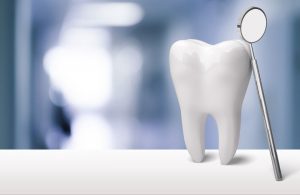
A root canal is an endodontic procedure that is performed to remove infected or diseased dental pulp. Dental pulp is the soft tissue from the pulp chamber of a tooth down to the root of the tooth. If an infected tooth is left untreated, the infection may spread from the pulp to the bone holding the tooth in place. An abscess may result from an untreated tooth. In more severe cases, the infection may spread to other teeth, the jawbone, the sinuses, or even to the brain. In the case of a more severe abscess, it may not be possible to save the tooth and an extraction may be the only alternative. Bitewing x-rays are commonly used as a diagnostic tool to identify tooth decay. In more comprehensive cases, dentists and endodontists may recommend a periapical x-ray or even a CBCT scan to have a 3-dimensional image of the root and surrounding gum tissue.
Root canals may be classified as non-surgical or surgical. Most root canals are non-surgical in nature because they involve drilling a little bit deeper than a dentist would drill to perform a routine filling. During the non-surgical procedure, the dentist would numb the affected tooth and use a rubber dam to isolate the tooth. A rubber dam prevents bacteria in saliva from entering the void in the tooth during the root canal procedure. After drilling through the enamel and dentin of the tooth, the dentist would use a series of root canal files progressively increasing in diameter to remove the infected pulp tissue within the root canals.
Premolars typically have two roots while molars tend to have three roots. Molars may even have four roots. It is important for the dentist to utilize an x-ray to identify the number of roots in the tooth before starting the procedure and remove the pulp tissue from all roots. After the pulp tissue is removed, the dentist may take an x-ray image with the file in place to ensure that they have removed all pulp tissue. After all the pulp tissue is removed, the dentist typically inserts an antibacterial medication along with gutta percha cones of the appropriate diameter to fill the void in the roots.
The gutta percha cones are held in place with a sealer paste and the tooth is restored with a simple filling. The patient should not feel any sensation in the treated tooth because all nerves and pulp tissue are removed during a root canal. Following the completion of the root canal, the patient is encouraged to return to the general dentist for the placement of a restorative crown on the treated tooth. A tooth with a root canal may last several decades and the placement of a crown will ensure optimal esthetics and functionality of the restored tooth.
